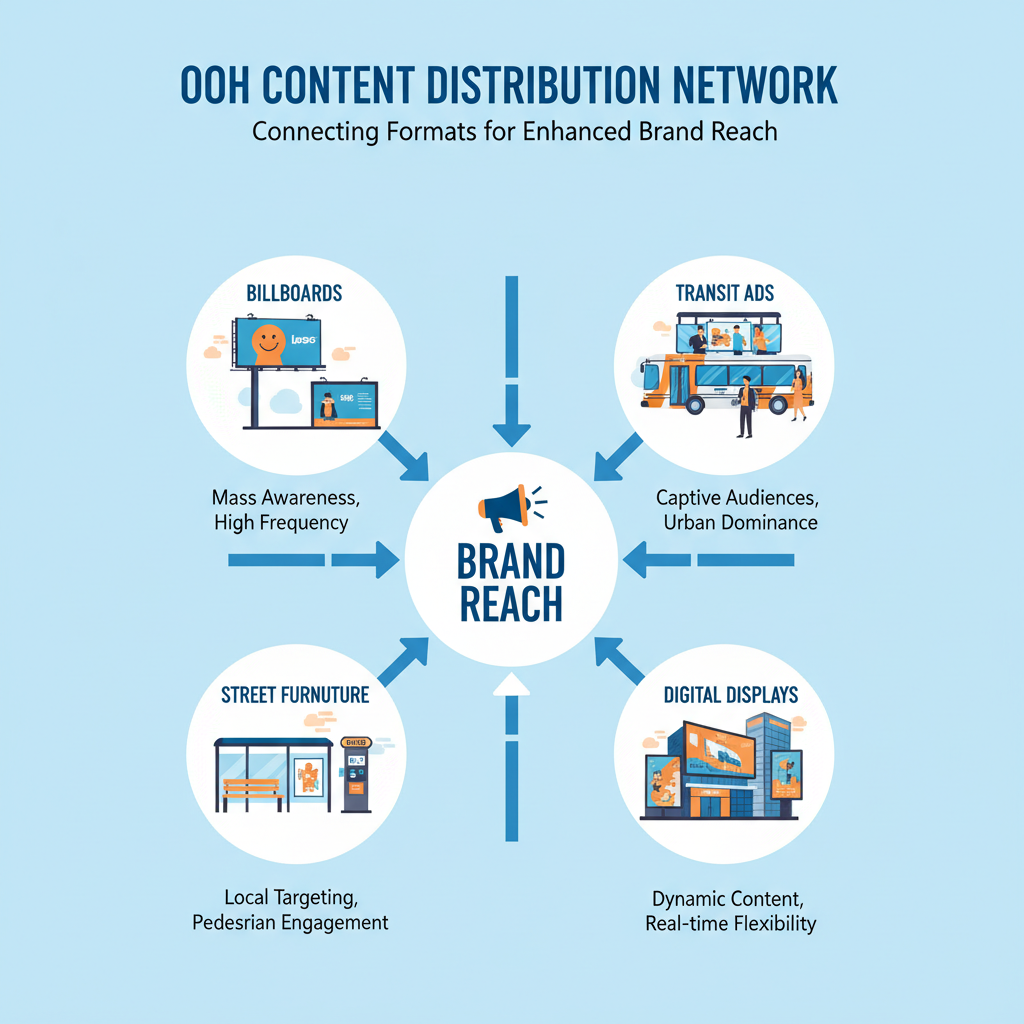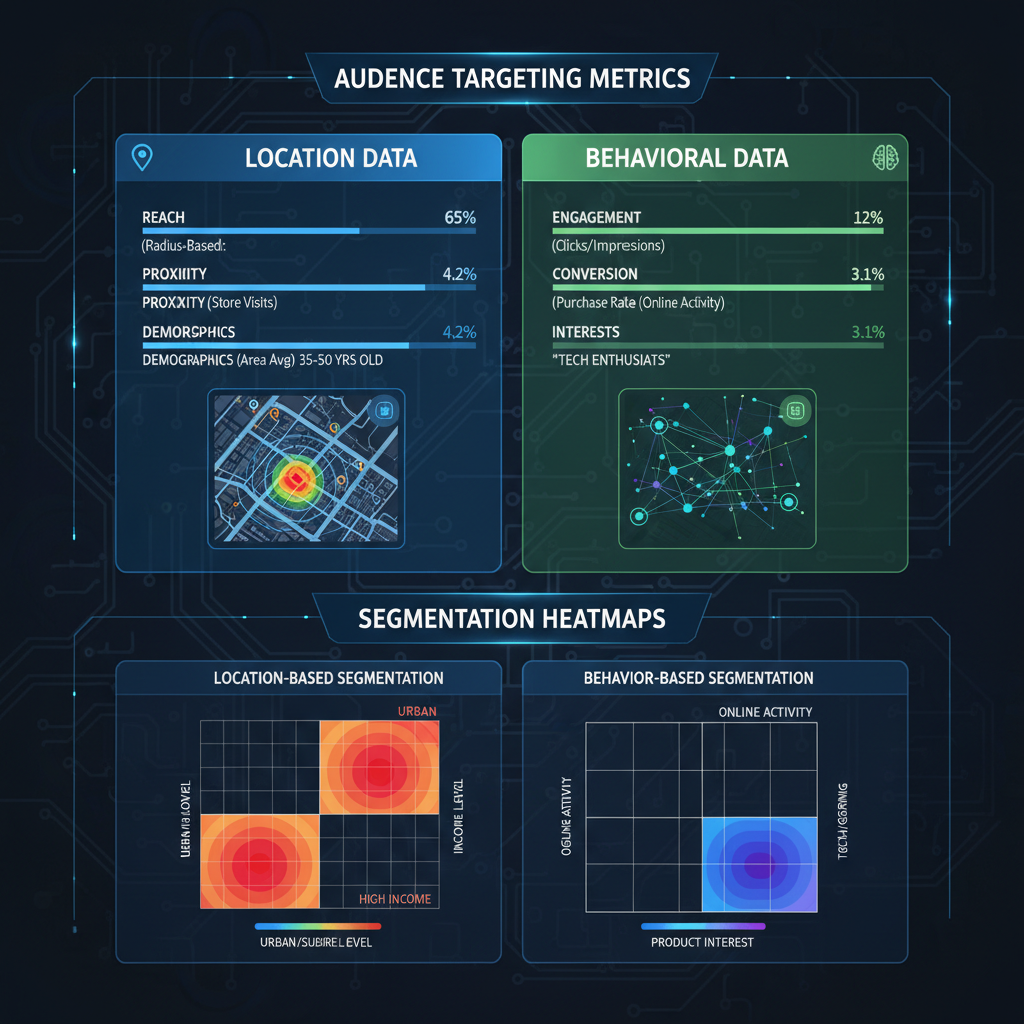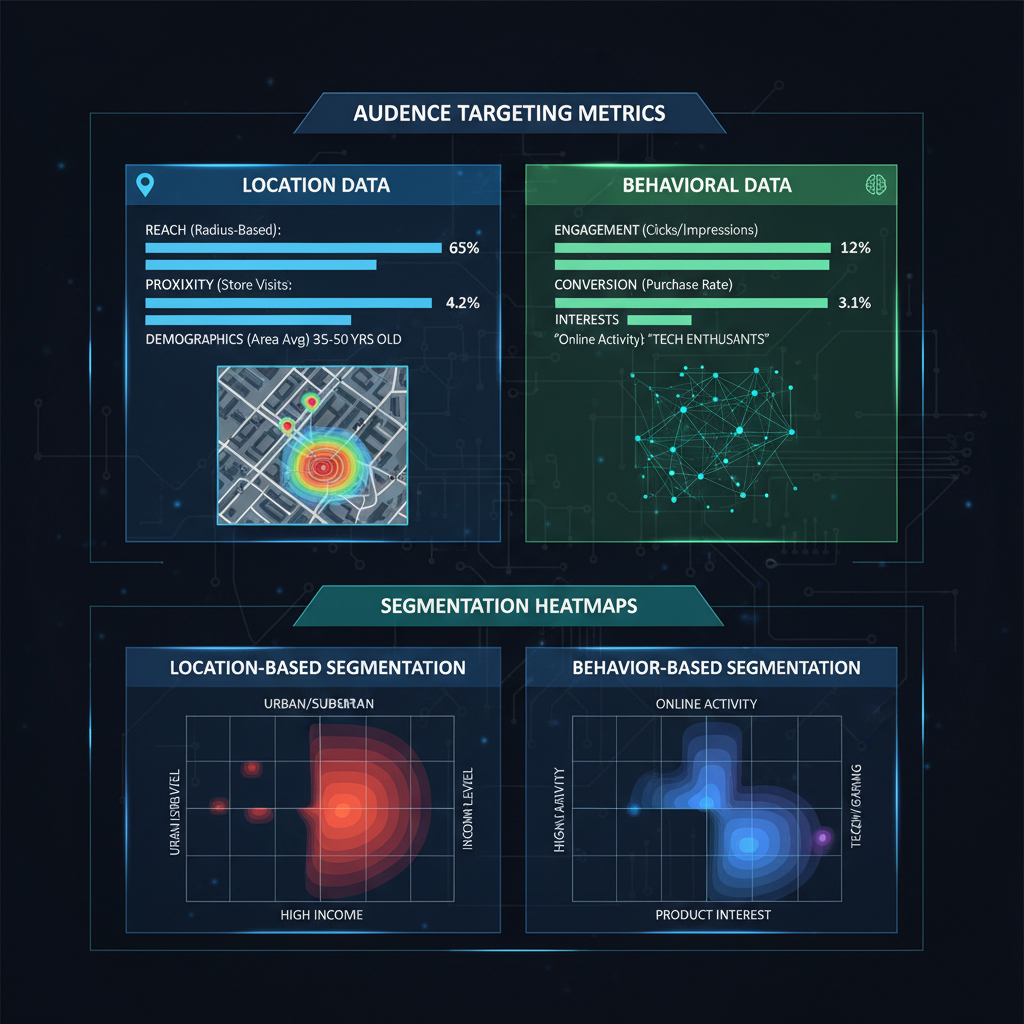Out of Home Content Distribution Strategies for Brand Growth
Learn strategic out of home content distribution methods, from location-based targeting to programmatic OOH, to boost brand visibility and growth.

Understanding Out of Home (OOH) Content Distribution
Out of Home (OOH) content distribution is a strategic marketing approach that delivers brand messages through physical and digital media encountered outside consumers’ homes. As a key component of outdoor advertising, it traditionally encompassed billboards, posters, and signage. Today, with the integration of digital technology, advanced targeting, and real-time data, OOH has evolved into a high-impact element of the multi-channel marketing mix.
By strategically placing branded content in high-traffic public areas, OOH captures attention during daily routines—commutes, shopping trips, or transit station visits—keeping brands visible without dependency on personal devices or direct feeds.

Role in Modern Marketing
OOH content distribution fulfils two pivotal marketing functions:
- Brand Awareness – Delivers broad demographic reach with striking visual presence.
- Contextual Influence – Aligns message and location for heightened relevance and resonance.
Integrated with data-driven targeting and digital channels, OOH bridges offline and online experiences for more holistic engagement.
---
Key Formats in OOH Content Distribution
From static prints to cutting-edge dynamic signage, OOH formats vary by scale, cost, and creative flexibility.
Common OOH Formats
| Format | Description | Ideal Use |
|---|---|---|
| Billboards | Large-scale displays along highways or central city locations. | Mass awareness campaigns. |
| Transit Ads | Posters, wraps, or digital screens on buses, trains, and stations. | Targeting daily commuters. |
| Street Furniture | Ads placed on benches, bus shelters, and kiosks. | Neighborhood-level promotions. |
| Digital Screens | Dynamic displays in malls, airports, or building exteriors. | Campaigns requiring frequent creative updates. |

---
Audience Targeting with Location and Behavioral Data
Modern OOH thrives on precision targeting rather than pure mass reach.
Location-Based Targeting
Foot traffic analytics enable placement in areas with high concentrations of desired audience segments—e.g., sports brands focusing on stadium districts.
Behavioral Data
By integrating mobile data, purchasing habits, and seasonal patterns, advertisers align OOH messages with key decision-making moments.
Geo-Fencing
Triggers mobile ads shortly after a person passes an OOH installation, reinforcing brand recall with timely digital engagement.
---
Integrating OOH with Digital Campaigns
OOH reaches its full potential when part of an omnichannel strategy.
Cross-Channel Synergy:
- Consistent Messaging – Unified visuals and themes across offline and online.
- Sequential Storytelling – OOH teasers followed by detailed digital content.
- Amplified Social Impact – Encourage sharing of creative OOH executions via social media.
Example Flow:
OOH billboard —>
Social media ad —>
Landing page with offer —>
Lead capture and follow-up email---
Leveraging Programmatic OOH Platforms
Programmatic OOH automates buying, placement, and creative updates, allowing for on-the-fly changes.
Advantages:
- Dynamic Updates aligned with stock or pricing shifts.
- Target Refinement from live analytics.
- Cost Efficiency via automated bid management.

Rapid testing and scaling of high-performing creatives are possible, enhancing ROI.
---
Best Practices for Creative Design in OOH
Core Principles
- Visibility – High-contrast colors and bold typography for distance readability.
- Brevity – 5–7 words for quick comprehension.
- Impact – Memorable visuals or copy.
Design Tips:
- Test creatives in environmental simulations.
- Account for viewer motion speed (pedestrian vs. vehicle).
- Ensure logos are recognizable even without full text viewing.
Example:
Big Image. Short Tagline. Clear Logo.---
Measuring OOH Campaign Performance
Digital advancements open more granular measurement for OOH.
Key Metrics
- Impressions – Based on traffic and location analytics.
- Engagement – QR scans, app downloads, social mentions prompted by OOH exposure.
- Conversions – Actions following exposure, tracked via attribution tools.
Measurement Tools:
- GPS-driven audience estimates.
- Sensor and camera integrations.
- Online surveys assessing recall and perception.
---
Case Studies of Successful OOH Campaigns
Food & Beverage
Digital subway ads timed to morning commutes with synchronized mobile coupons lifted in-store sales by 18%.
Technology
AR-enabled bus shelter posters offering interactive demos resulted in higher-quality leads.
Retail Fashion
Dynamic billboards keyed to weather forecasts showcased seasonal products, increasing conversion rates.
---
Common Mistakes to Avoid
- Poor Location Choice – Failing to assess traffic patterns misses target segments.
- Overcomplicated Messaging – Dense copy reduces impact.
- Lack of Measurement – No KPIs limits insight for optimization.
- Ignoring Integration – Isolated campaigns lose synergy benefits.
---
Future Trends in OOH Content Distribution
Augmented Reality (AR)
Interactive AR displays create gamified engagement through mobile devices.
Interactive Screens
Touch-enabled panels solicit immediate feedback and participation.
Sustainability
Eco-materials, solar-powered signage, and low-energy operation enhance brand reputation.
---
Conclusion
Out of Home content distribution has progressed from static posters to dynamic, data-informed experiences. Selecting optimal formats, applying precise location and behavioral targeting, and linking OOH with digital strategies empowers brands to drive awareness and engagement across multiple touchpoints. With programmatic adaptability, innovative design, and emerging technologies like AR, OOH remains a vital pillar of marketing success.
Ready to amplify your brand presence? Explore targeted, integrated OOH campaigns to capture audiences where they live, work, and travel.



